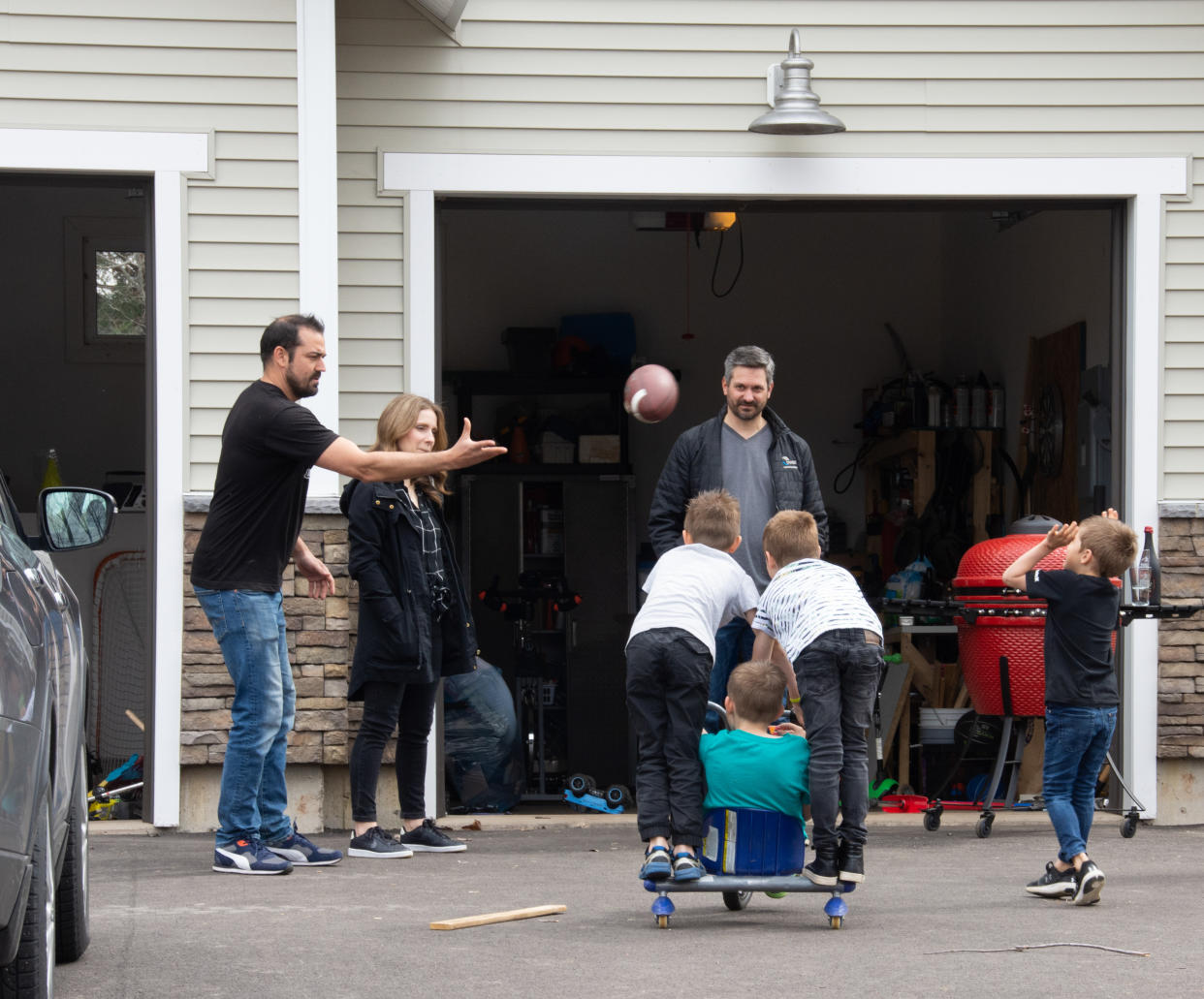Should you form a COVID-19 'double bubble' with another household? Here's what experts say

While lockdown restrictions have eased up in most parts of the country, people are still worried about their risk of contracting COVID-19. And those fears aren’t unfounded: Cases of COVID-19 are increasing in 18 different states, according to data tracking website COVID Exit Strategy, and some are rapidly increasing. Arizona, for example, saw a 198 percent increase in cases over the past 14 days, while Vermont has seen a 256 percent rise in cases.
Still, many people have been isolated from friends and family for months now, and it’s understandable to want to expand your social circle beyond your immediate household. That’s where the “double bubble” comes in.
The idea behind it is simple, per Canada’s Global News: You take two households that are doing their best to follow the rules of preventing the spread of COVID-19 and allow them to interact with each other.
What are the rules of a double bubble?
There are no set rules for this, but, in general, you and another household decide to form a double bubble. That is, you only interact with each other when it comes to socializing. It’s hard to say exactly where this idea came from, but it was floated by health officials in Canada’s New Brunswick province back in late April.
Under a “two-household bubble … your household can join up with one other household, if both households mutually agree,” guidance from Canadian public health officials reads. “You must not have close contact with anyone else. You cannot join up with more than one household or bubble.” This is currently recommended in certain areas of the province where there is a low-risk “orange” level, which starts two to four weeks after a curve starts to flatten. Basically, you choose one other household to interact with, and you stick with them.
The concept is also popular in New Zealand and the U.K. It seems to be slowly gaining steam in the U.S. California’s Alameda County, for example, recently discussed the concept of a “social bubble” in a public health order. “A ‘Social Bubble’ means a stable group of not more than 12 individuals, who may attend outdoor social or other events together,” the order reads. “A Social Bubble may be comprised of a combination of households, but no household or individual may participate in more than one Social Bubble.”
What do the experts think?
Currently, the Centers for Disease Control and Prevention recommends limiting contact with people outside your household, and suggests that you “put distance between yourself and other people outside of your home.”
But infectious disease experts say forming a double bubble can be fairly practical, especially since so many are craving contact with others. “Most humans are social animals,” Dr. Richard Watkins, an infectious disease physician and professor of internal medicine at the Northeast Ohio Medical University, tells Yahoo Life.
If your double bubble “can be kept under 10 people, that is probably not that risky,” Watkins says. Dr. William Schaffner, an infectious disease specialist and professor at the Vanderbilt University School of Medicine, agrees. “It’s a perfectly reasonable strategy,” he tells Yahoo Life.
But Dr. Amesh Adalja, a senior scholar at the Johns Hopkins Center for Health Security, tells Yahoo Life that it’s not going to be easy to maintain a double bubble for long. “Remember that the virus is a risk that we will be facing for possibly two years,” he says. “Schools will open, workplaces will open. … I’m not sure what purpose [a double bubble] serves in the long run.”
It’s also difficult to police this kind of interaction, even within the double bubble. “It only works as long as we are all careful and on the same page,” Schaffner says.
From an epidemiological standpoint, having people stick with others in their double bubble could help contract tracers quickly determine who is most at risk of contracting the virus if one person in the bubble gets infected, Watkins says.
While the concept of a double bubble isn’t perfect, Adalja says it’s “relatively safe, and a way for people who are risk-averse to socialize.”
For the latest coronavirus news and updates, follow along at https://news.yahoo.com/coronavirus. According to experts, people over 60 and those who are immunocompromised continue to be the most at risk. If you have questions, please reference the CDC’s and WHO’s resource guides.
How to maintain your physical and mental health during the pandemic
Taking care of a loved one with COVID-19? Here’s how to stay healthy
Q&A with Dr. Kavita Patel: How to keep your family safe and maintain your mental health
Read more from Yahoo Life
3 COVID-19 vaccines to start human trials this summer: Here’s what that means
Wearing a face mask during sex can reduce COVID-19 transmission, say doctors
Want daily lifestyle and wellness news delivered to your inbox? Sign up here for Yahoo Life’s newsletter.

